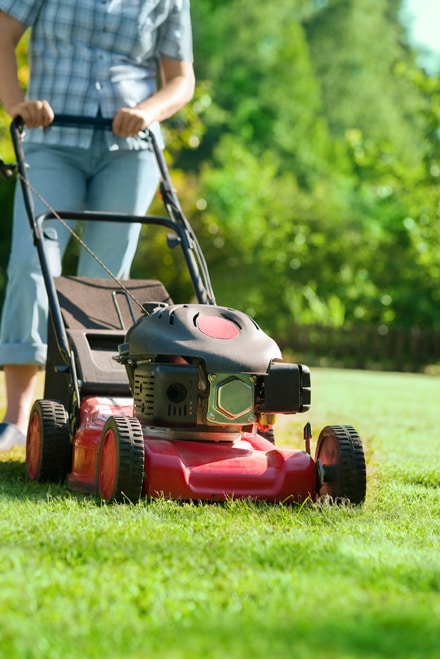
Tall fescue, which has stayed green during the winter, is actively growing since the weather conditions are favorable for it. Many factors need to be taken into consideration in properly maintaining your lawn. Appropriate amounts of water, fertilizer, correct soil pH, and reducing compaction are important. One of the most important components of lawn maintenance is correct mowing. The grass should be cut at the appropriate height. Proper mowing will help improve the quality of your lawn and keep it attractive.
Each species of grass has a preferred mowing height. Tall fescue and St. Augustinegrass should be cut at two to three inches, and zoysiagrass and centipedegrass need to be mowed at one to one and one-half inches. Hybrid bermudagrass prefers cutting to a height of a half an inch to one and one-half inches while common bermudagrass should be cut one to two inches. During hot, dry periods, raise the mowing height one-half of an inch. The longer leaf blades will shade the soil, keeping the grass roots cooler and reducing moisture loss. When adjusting the mowing height, measure the distance from the mowing blades to the ground and make sure all four wheels are set at the same height.
When mowing, remove only one-third of the grass blade. For example, if you want to maintain the lawn at a height of two inches, mow when the grass blades are high. Make sure the grass is cut periodically. Removing more than one-third will increase the lawn’s susceptibility to pests and environmental stress, causing damage to the turfgrass. If the grass becomes too high between mowings, increase the height of the cut and then gradually lower it until the recommended height is reached for the particular type of grass you have in your lawn.
There are two types of lawn mowers: reel mowers and rotary mowers. Reel mowers have a sharp, scissor-like cut and are used for high profile sites. They are more expensive to use and maintain. Most homeowners use the rotary mower where the blade is on the bottom. The mower blades should be kept sharp at all times. Dull blades will shred the ends of the grass, which will cause the lawn to develop an unsightly brown to white appearance. Also, the grass is more prone to diseases and water loss. Sharpen the blades as needed or replace them.
Many homeowners question whether the grass clippings should be collected or left to fall on the ground. Allowing for them to fall back to the ground where they will break down and release nutrients will add organic matter to the soil improving its quality. One concern is the clippings could increase thatch, which is a layer of dead roots, stems, and dead grass blades that have accumulated between the surface of the soil and the grass leaf blades. Thatch over one-half of an inch in depth can lead to increased pest problems and other stresses. If the lawn is cut on a regular basis by removing no more than one-third of the leaf blade, the chances of developing a problem with thatch is reduced.
Practicing proper mowing techniques will help improve the quality of the health of the grass in your lawn and its overall appearance. Mowing at the correct height with a well maintained mower will be beneficial to your lawn.
Timothy Daly, is an Agricultural and Natural Resource Extension Agent with Gwinnett County. He can be contacted at 678-377-4010 or tdaly@uga.edu

